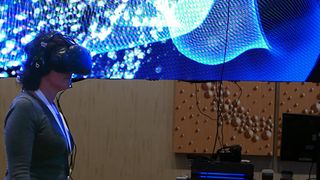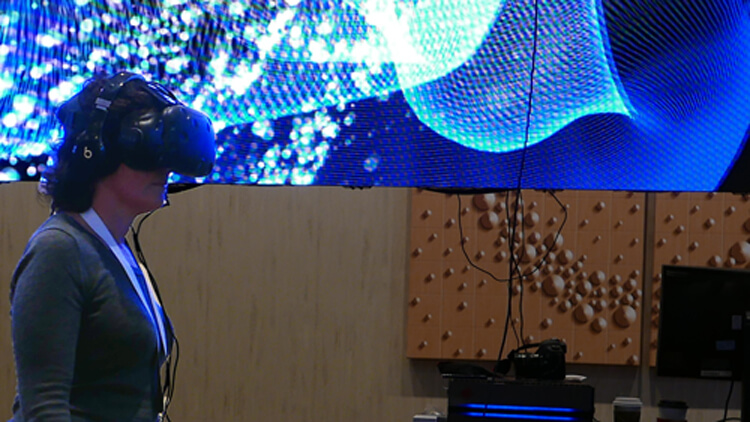Long before “digital signage” was a mainstream moniker– and a big market– we pioneered the coverage of the nascent industry. After all, at NewBay Media we’d been covering AV everywhere– for the boardroom, the classroom, for the stage and live events, for sports arenas. Taking the screens and the displays out of those rooms and arenas and putting them into public spaces was a natural evolution for the industry, and for us. The rest is history, as now the digital signage market is so big and so pervasive that it’s often taken for granted. It’s part of the AV universe– and that’s a good thing.
What’s the new frontier, for AV? VR and AR are generating a lot of interest. And they will be the focus of a special event, Virtual Reality 2020 – to take place in New York City October 16th, and produced by NewBay Media, that is already drawing lots of buzz– as the best VR (virtual reality) and AR (Augmented Reality) minds from the world of content and broadcast meet with movers and shakers from other arenas including pro AV.

In a special VR demo/exhibit at SXSW Interactive, one of many VR demos at SXSW, Spatium: a VR trilogy inspired by Philip Treacy, a direct-view LED wall surrounded the viewer wearing the VR headset. A VR “journey” ensued, inspired by a famous hat by fashion designer Treacy.
At InfoComm 2017 in early June, the new Immersive Technologies Pavilion featured augmented reality, virtual reality, and mixed reality. According to InfoComm, “those these technologies are traditionally associated with entertainment and gaming, there's growing demand for commercial applications in education, government, manufacturing, and more.”
- And fast forward to late June 2017: The Smart Cities Connect Conference and Expo/US Ignite Application Summit, that took place the week before the long July 4th weekend, saw 1800 attendees converge in Austin, from 27 countries. 300 cities were represented (with city officials from mayors to data, policy and tech executives). There were live application demos, an expo section with 150 exhibitors, including 50 startups & innovators pitching their emerging tech solutions for cities. It was a unique mix of analytical sessions, formal presentations, panel discussions, demos of technology solutions, demos of prototype solutions such as robots and transparent (digitally) cars. The atmosphere was a cross between a government conference, a tech expo, and a high-level university/research facility dive into future technology. And VR and AR were on display. I learned at that conference that medical school applications are now being built around both new technical capabilities and changing pedagogical needs of the curricula, and VR and AR are playing a part.
- “There is a big push to transform health care education and delivery, including in medical schools nationwide– a big push, and including federal funding”, said DJ Zakhidov, Research Associate, Center for Modeling and Simulation at the University of Texas at Dallas, when I spoke to him at the Smart Cities Connect Conference in Austin.
- “In certain states,” explained Zakhidov, “for clinical practice requirements in their course requirements, some programs now allow 20% of those clinical practice requirements to be done in the virtual word. There are shortages in clinical placement, not enough real clinical space, so there is big demand for this kind of VR and AR technology, from medical schools, from nursing schools. It’s going to be part of the curriculum. So we are trying to build the some of those pieces.”
- As we all look for the next big thing in VR and AR, for the huge AV market specifically, we’re not having to look far. I’ll be at the VR 2020 Summit in New York in October, looking through VR headsets– and without– at the new landscape.










